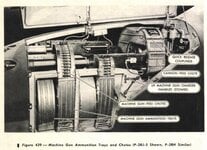etaicklen
Airman
I noticed that with the four cannons mounted in the upper nose of the twin-engined German Messerschmitt BF-110, one of the cannon barrels protrudes out farther than the others. I then noticed that on the American twin-engined P-38 Lightning, which has a similar gun layout, it also has one barrel longer than the other three. Finally, certain versions of the twin-engined Japanese Ki-46 have that gun layout in the nose as well. I have done a large amount of searching online and have come up empty-handed, does anyone know why one barrel sticks out farther than the rest on these three aircraft? I'm hoping somebody here can answer my question, as copious browsing and ChatGPT querying has also turned up nothing.





